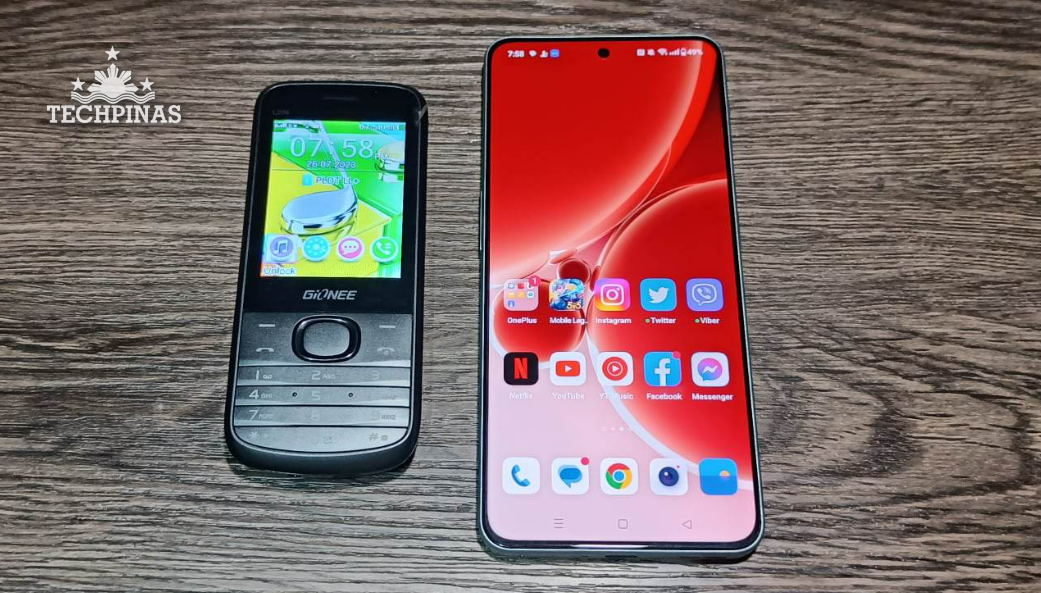Cellphone vs Smartphone - What Are The Similarities and Differences?
In today's interconnected world, mobile devices have become an
indispensable part of our daily lives. The terms "cellphone" and
"smartphone" are often used interchangeably, but they refer to distinct
categories of mobile devices with unique capabilities and features.
In this TechPinas article, we will explore the fundamental differences between
cellphones and smartphones, shedding light on their respective functionalities
and evolutionary paths.

Cellphone vs Smartphone
Cellphone: The Early Days of Mobile Communication
The term "cellphone" is a contraction of "cellular telephone," reflecting its
primary function as a portable device for voice communication. In the early
days of mobile telephony, cellphones were simple, compact gadgets with limited
features. Their main purpose was to make and receive calls using cellular
networks.
Key Characteristics of Cellphones
1. Voice Calls
Cellphones primarily supported voice calls, and users could send and receive
text messages, though these were often limited to basic SMS.
2. Limited Display and User Interface
Cellphones typically had small monochromatic screens and straightforward user
interfaces, usually consisting of a numeric keypad for dialing.
3. Basic Connectivity
Basic cellphones offered limited connectivity options, such as Bluetooth for
file transfers or hands-free calling.
4. Long Battery Life
Due to their minimalistic features, cellphones boasted impressive battery
life, often lasting several days on a single charge.
Smartphone: The Revolution of Mobile Technology
The introduction of the smartphone marked a revolutionary shift in mobile
technology. A smartphone is essentially a handheld computer that combines
telephony capabilities with advanced computing features. The smartphone's
versatile nature led to its rapid proliferation and transformative impact on
modern society.
Key Characteristics of Smartphones
1. Advanced Operating Systems
Today's smartphones run sophisticated operating systems like iOS (Apple) and
Android (Google), enabling users to install and run various applications.
2. App Ecosystem
Smartphones have access to extensive app stores, offering a vast array of
applications for productivity, entertainment, communication, and more.
3. High-Quality Displays
Smartphones sport larger, high-resolution displays that showcase vibrant
colors and support touch interactions.
4. Enhanced Connectivity
Smartphones support multiple connectivity options, such as Wi-Fi, 4G/5G
networks, NFC, and GPS, providing seamless internet access and location-based
services.
5. Multimedia Capabilities
Smartphones excel in multimedia functions, offering high-resolution cameras,
video recording, music playback, and gaming capabilities.
6. Personal Assistants
Many smartphones are equipped with virtual assistants like Siri (Apple) or
Google Assistant, offering voice-activated commands and intelligent
interactions.
The Blurred Lines: Convergence of Cellphones and Smartphones
Over time, the line between cellphones and smartphones has blurred as
technology advances. Modern cellphones have adopted some smartphone features,
such as larger displays and basic app support, while smartphones have become
more accessible to a broader audience with varying price points.
While cellphones and smartphones share a common purpose of mobile
communication, they differ significantly in terms of capabilities and
features. Cellphones were early pioneers, focusing primarily on voice calls
and basic messaging, whereas smartphones are powerful, multifunctional
devices, providing users with a vast array of tools and applications. As
technology continues to evolve, the distinction between cellphones and
smartphones will continue to blur, opening up exciting possibilities for the
future of mobile technology.


